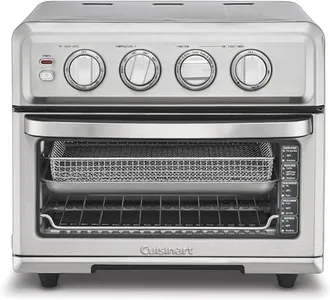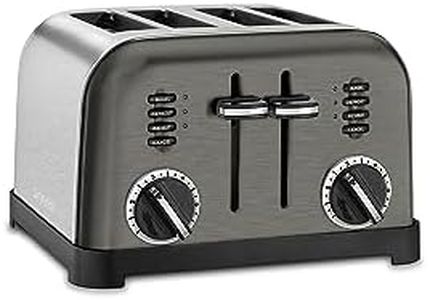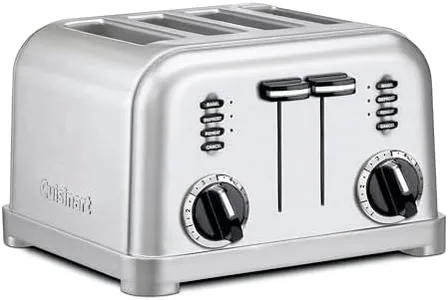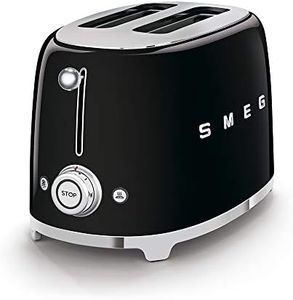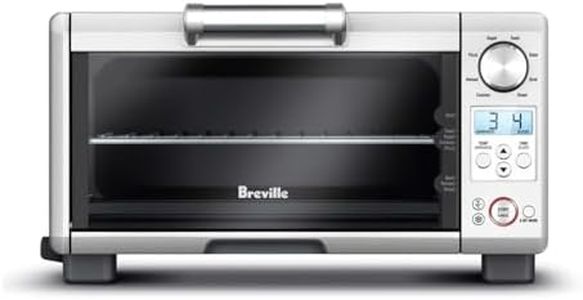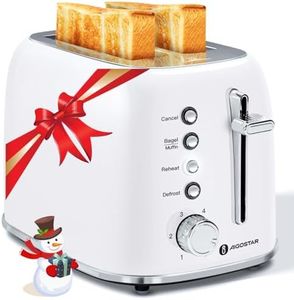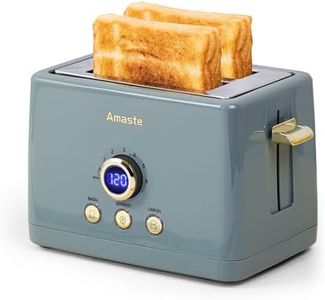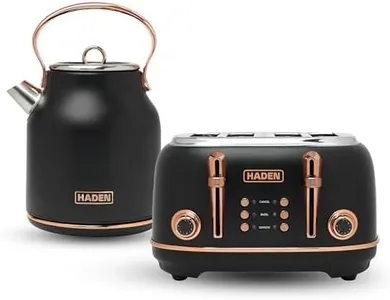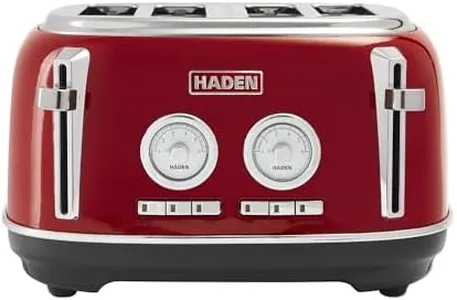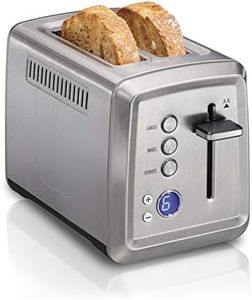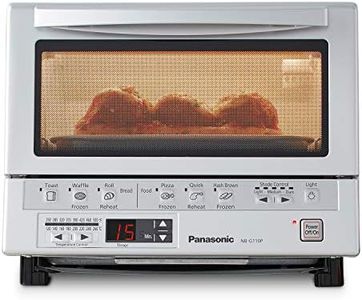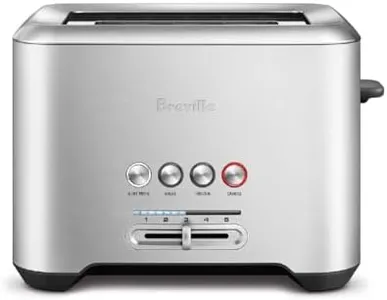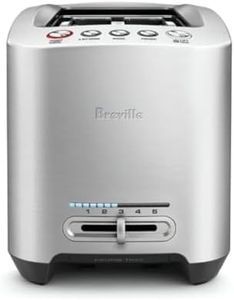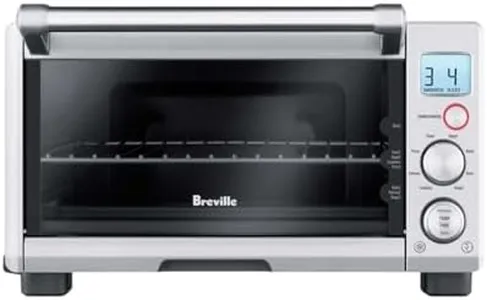10 Best Compact Toasters 2025 in the United States
Our technology thoroughly searches through the online shopping world, reviewing hundreds of sites. We then process and analyze this information, updating in real-time to bring you the latest top-rated products. This way, you always get the best and most current options available.

Our Top Picks
Winner
Cuisinart Air Fryer Toaster Oven with Grill, 1800W 8-1 Air Fryer Oven with Bake, Convection Bake, Grill, Broil and Warm Options, Large Capacity, 60-Minute Timer, TOA-70NAS, Stainless Steel
Most important from
6449 reviews
The Cuisinart Air Fryer + Convection Toaster Oven is a versatile kitchen appliance that goes beyond a typical compact toaster. It can toast up to 6 slices of bread at once, which is generous for its size (about 12 by 16 inches footprint), making it suitable for small families or those who want more than just toast. It offers multiple cooking settings including air fry, bake, broil, grill, and warm, with a wide temperature range up to 450°F, giving you a lot of flexibility beyond standard toasting needs. The dial controls are easy to understand and allow you to select precise toast shades and cooking times.
The stainless steel build looks sturdy and modern, but it weighs over 23 pounds, which is heavier than many compact toasters, so it's less portable. The interior has a nonstick coating that simplifies cleaning, and accessories like an air fry basket and baking pan are included, which is a nice bonus. Safety-wise, it has an auto shutoff feature and a timer that helps prevent overcooking or accidents. However, it is not dishwasher safe, so cleaning the accessories requires hand washing.
With its large capacity and multiple cooking functions, this appliance suits users looking for a multi-use device rather than a basic toaster. If your main goal is just quick toast, this might be more than you need and takes up more counter space, but if you want a compact appliance that can handle various cooking tasks, this model is a strong option.
Most important from
6449 reviews
Cuisinart CPT-180BKS Classic 4-Slice Toaster, Black/Stainless Steel
Most important from
26959 reviews
The Cuisinart CPT-180BKS is a solid choice if you want a compact toaster that can handle up to four slices at once, making it great for small families or shared kitchens. It has 1.5-inch wide slots, which are roomy enough to toast various bread types including bagels and thicker slices. The toaster offers six shade settings, letting you pick how light or dark you want your toast, which adds nice customization.
One standout feature is the dual independent controls, so you can toast two different batches with different settings at the same time — very convenient if you have diverse preferences. The build quality feels sturdy thanks to its stainless steel body, and it has a classic design that fits most kitchen styles. Cleanup is straightforward because of the removable crumb tray, and the cord wrap underneath helps keep your countertop tidy. Safety-wise, it includes a high lift lever to easily remove smaller pieces without burning your fingers.
While versatile, it doesn’t have some newer smart features like digital timers or automatic sensing. Also, its size might be a bit bulky for very tight counter spaces compared to smaller two-slice models. If you need a dependable, easy-to-use 4-slice toaster with good build quality and multiple functions, this model covers most essentials well.
Most important from
26959 reviews
Cuisinart 4 Slice Toaster, Compact Stainless Steel Toaster with Extra-Wide Slots for Toasting Bread, French Toast, Bagels and Pastries, Defrost & Reheat Functions, CPT-180P1, Brushed Stainless
Most important from
26959 reviews
The Cuisinart 4 Slice Toaster Oven in Brushed Stainless is designed with a classic aesthetic that would complement most kitchen decors. Its brushed stainless steel housing with chrome and black accents adds a touch of elegance. The toaster features two control panels and six browning settings, providing flexibility to achieve the desired toast shade. The additional functionalities like reheat, defrost, and bagel options, along with LED indicators, enhance usability.
The toaster's capacity with 1.5-inch-wide slots is quite functional, accommodating a variety of bread types and sizes, including bagels and pastries. The extra-lift carriage lever is a handy feature, reducing the risk of burns when retrieving smaller items. In terms of build quality, the stainless steel material is both durable and aesthetically pleasing.
Weighing 6.1 pounds and with dimensions of 10.65"D x 11.15"W x 7.5"H, it may take up considerable counter space, which is something to consider if you have a compact kitchen. Additionally, while the slide-out crumb tray is convenient for cleaning, the overall ease of cleaning might still require some effort due to the design. Another point to consider is that while the toaster has a good safety feature with the extra-lift lever, it lacks some advanced safety mechanisms found in newer models.
Most important from
26959 reviews
Buying Guide for the Best Compact Toasters
Choosing the right compact toaster can make your mornings more convenient and enjoyable. When selecting a compact toaster, it's important to consider several key specifications to ensure it meets your needs. Compact toasters are designed to save space while still providing efficient toasting capabilities. Here are the key specs to look at and how to choose the best one for you.FAQ
Most Popular Categories Right Now


